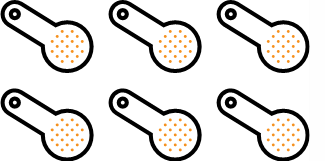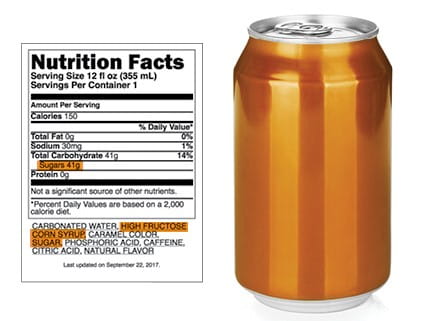Sugar Unwrapped
Sugar 101
We’re kicking off our “Unwrapped” healthy-eating series, which will uncover what’s inside the foods we love and why it matters. The series will explore the pros and cons of nutrients like sugar, fats and sodium, how much is too much and alternatives to make healthy choices easier. In this segment, we’re talking about sugar.

What is sugar?
Sugar is a carbohydrate that gives our bodies a natural burst of energy and provides fuel for our body. It comes in many forms, some naturally occurring in fruits, milk and vegetables and some from refined or “added” sugar. Added sugars have no nutritional value, contribute unnecessary calories, and lead to health problems like obesity, type 2 diabetes, heart disease and gout. Sugar is added to many foods to improve taste—from pasta sauce and salad dressing to soda and iced tea—and this is how we end up eating too much. The major sources of added sugars in our diet include soft drinks, sugar-sweetened beverages, candy, cakes, cookies and some dairy products, such as ice cream, sweetened yogurts and flavored milk.
How much is too much?
And while we all love to indulge our sweet tooth; how much added sugar is too much? The World Health Organization (WHO) offers the following recommendation:
No more than 6 teaspoons per day
Men and women should not consume more than six teaspoons (25 grams) of added sugar per day.

How much we’re actually consuming: 20 teaspoons per day!
Despite WHO's recommendations, the average American consumes 20 teaspoons of added sugar per day. That’s about a half cup.

How can I uncover the sugar in my food?

At first glance, it’s difficult to tell how much sugar is added to the foods we eat, particularly because the “sugar” section of nutrition labels includes both added sugars as well as naturally occurring sugars.
But take a closer look at the ingredients and you’ll find added sugars hiding under a long list of names: brown sugar, corn sweetener, corn syrup, dextrose, fructose, glucose, high-fructose corn syrup, honey, invert sugar, lactose, malt syrup, maltose, molasses, raw sugar, sucrose, trehalose, and turbinado sugar.
In the above example, you’ll see that this 12-ounce can of cola has 41 grams of sugar—nearly double the amount a woman should consume in one day and more than a man should consume. The sugar added to this beverage includes high fructose corn syrup as well as sugar.
What happens to our body when we eat too much sugar?

Sugar isn’t all bad, of course. Sugars that occur naturally in foods, such as vegetables, fruit and milk, are good for the body and give us a natural energy boost.
But too much can lead to obesity, cardiovascular disease and elevated blood pressure—even in kids. Excess sugar can also lead to mood swings, acne and wrinkles.
And eating foods with lots of added sugar, such as a doughnut, cookie or brownie, result in the dreaded “sugar crash” that saps us of energy.

